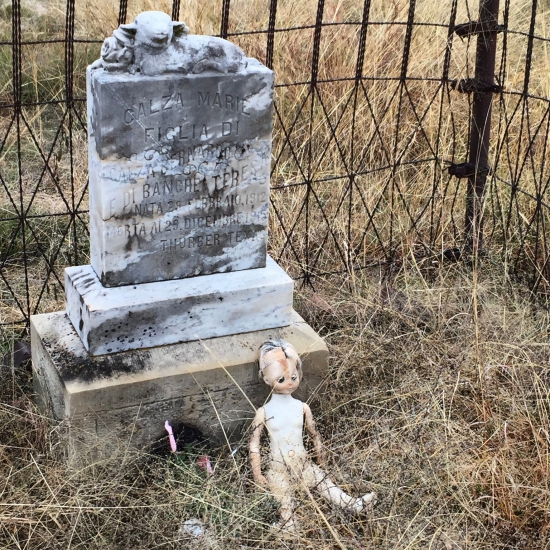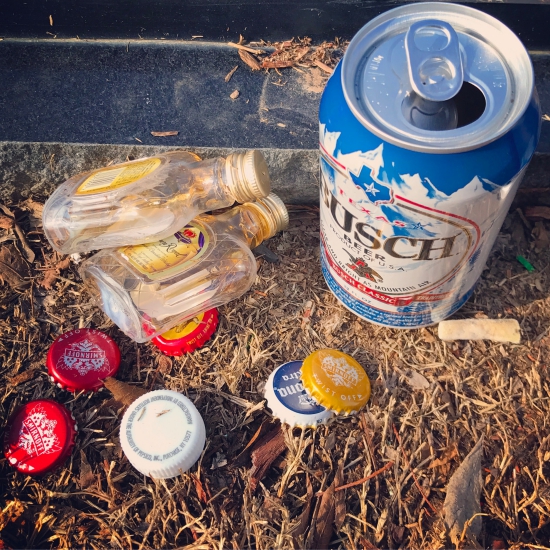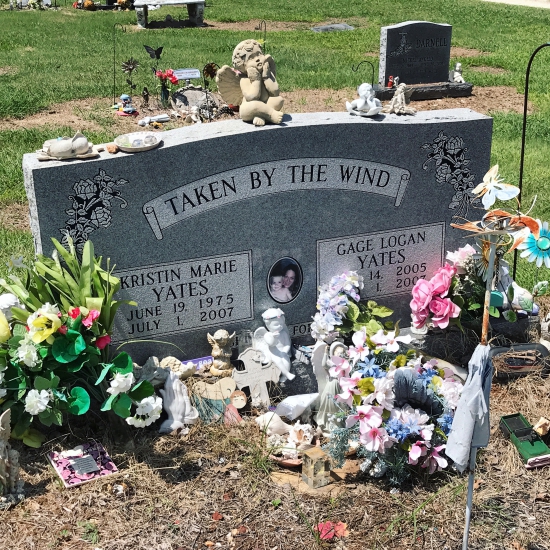Understanding Cemetery Symbols by Tui Snider
[The following is an adapted excerpt from my book, Understanding Cemetery Symbols. I hope you enjoy it! Also, full disclosure: that’s an Amazon affiliate link. If you buy my book after clicking it, I make a few pennies at no additional cost to you.]
What are Grave Goods?
When people visit cemeteries, they often leave items at gravesites such as coins, pebbles, seashells, decorations and items called “grave goods.”

Two kinds of grave goods
Items left at a gravesite that once belonged to the deceased or that are associated with the deceased, are called “grave goods.” Grave goods may either be left on top of the gravesite or buried with the deceased.

An example of both
The famous rocker, Dimebag Darrell, offers a good example for both types of grave goods. Not only is he buried in a KISS casket with one of Eddie Van Halen’s bumblebee guitars, but visitors often leave little bottles of booze on top of his grave as a tribute to his hard-partying rock and roll lifestyle.
Grave decorations vs Grave goods
Grave decorations, on the other hand, are items meant to beautify a gravesite. In modern cemeteries, I often see solar powered lights, colorful pinwheels and wind chimes as grave decorations. Up until the 1930’s grave goods were a common sight throughout the US.

Some cemeteries don’t allow grave goods
After the Great Depression, perpetual care became the norm for modern American cemeteries. Cemetery organizations became much more strict about the types of grave goods they will allow. Even so, the practice continues to this day.
There’s more to the topic of grave goods, but this is enough for one blog post, don’t you think? I’ll go into more detail another time. Have you seen grave goods in your neck of the woods? What sorts of things do you see in the cemeteries near you?
Want to learn more about cemetery symbols?
BLOG POSTS: Click here to read a whole bunch more blog posts about historic graveyards and cemetery symbols. I’m constantly adding new content here!
READ MY BOOK: Check out my book, Understanding Cemetery Symbols. It’s available on Amazon in paperback and ebook form.

I’m not certain if people leave grave goods here in Tucson. I haven’t been to a cemetery in several years. I remember visiting family gravestones as a child with my mother. She’d buy flowers and we’d spend an afternoon cleaning up and beautifying several headstones for deceased family members. What I remember most from those trips, though, was trying to find one gravestone. I can’t remember which family member it was, but someone had a gravestone that was separated from the rest of the family plot and difficult to spot as well.
Hi again, Irene! That’s great that you have those memories with your mother. I wonder why that one particular family member was off in a different area. Might be an interesting story there! Thanks again for dropping by my blog! :)